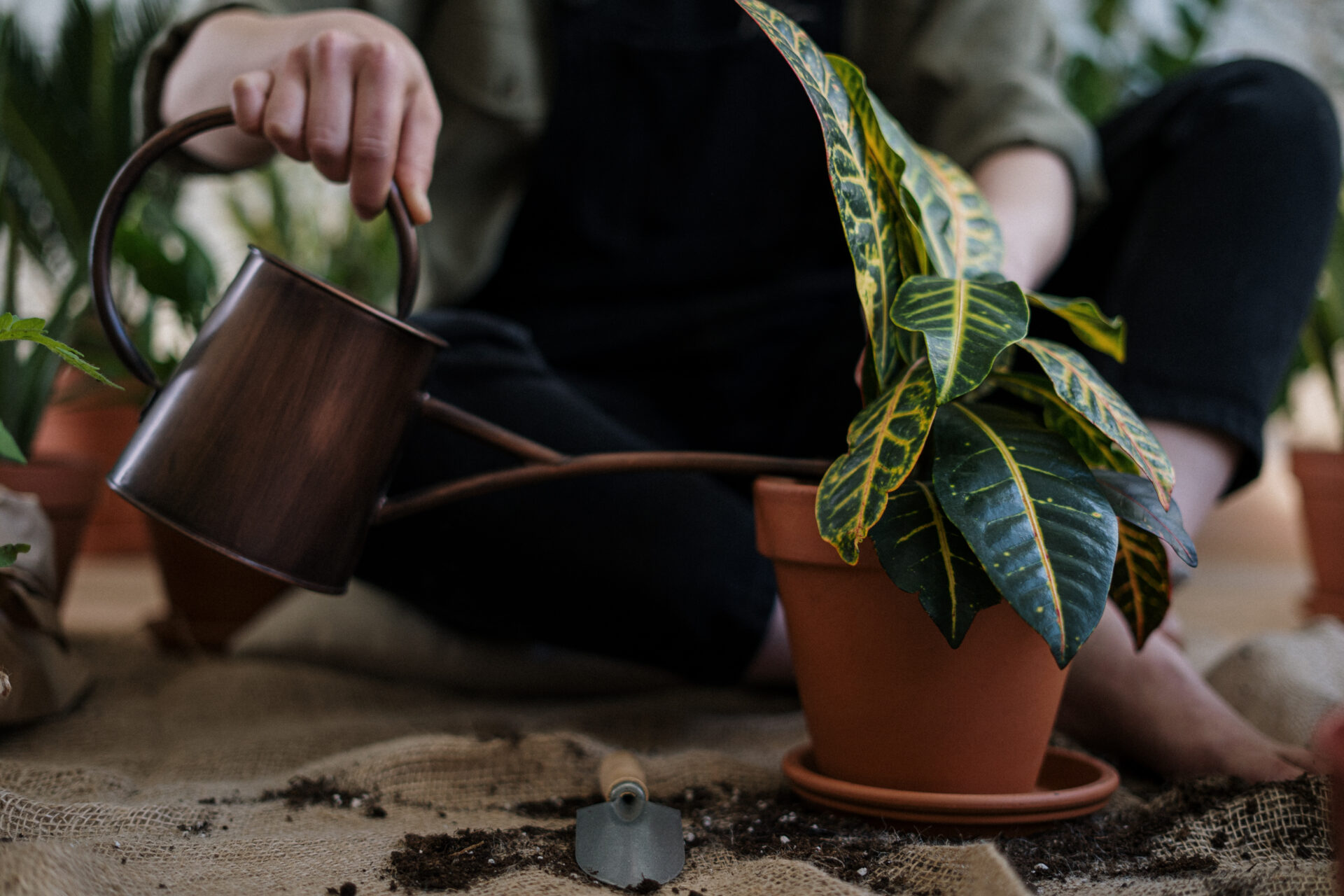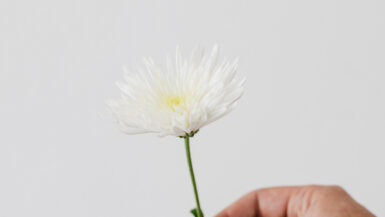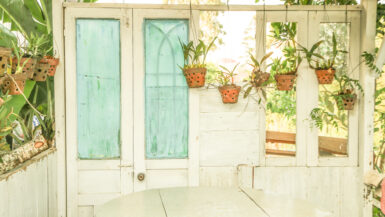Indoor vertical gardening has recently gained significant popularity among urban dwellers and space-conscious homeowners. This innovative approach to cultivating plants indoors maximizes limited space while providing fresh air and a touch of nature to any living environment.
However, for pet owners, creating a safe and pet-friendly indoor vertical garden requires careful planning and consideration. This article will explore various indoor vertical garden ideas tailored explicitly for pet owners, focusing on selecting non-toxic plants, designing pet-proof structures, and maintaining a harmonious coexistence between your beloved pets and your thriving green sanctuary.
Let’s explore indoor vertical gardening and discover how to create a beautiful, functional, pet-friendly home space.
Tips for Maintaining a Pet-Friendly Vertical Garden
Creating a pet-friendly indoor vertical garden requires careful planning and attention to detail. This ensures the safety and well-being of your pets and the success and longevity of your garden. In this section, we’ll share some essential tips on maintaining a pet-friendly indoor vertical garden that you and your furry friends can enjoy.
Choose Non-Toxic Plants
The first step in designing a pet-friendly vertical garden is selecting non-toxic plants. Many common houseplants can be toxic to dogs and cats when ingested. Be sure to research each plant you plan to include in your garden to avoid potential hazards to your pets.
Some popular non-toxic plant options for vertical gardens include spider plants, Boston ferns, and maranta. Consider incorporating some vertical succulent garden ideas into your design for an interesting and unique addition.
Prevent Access to the Garden
Another critical aspect of maintaining a pet-friendly vertical garden is ensuring your pets cannot access the plants easily. This can be achieved by strategically placing the garden in areas difficult for your pets to reach, such as high shelves or wall-mounted planters. Additionally, you may want to consider using materials like wire mesh or netting to create a barrier around the garden, preventing curious pets from getting too close.
Opt for Sturdy Materials and Structures
When designing your pet-friendly indoor vertical garden, it’s crucial to select sturdy materials and structures that can withstand the occasional bump or nudge from a playful pet. Opt for strong materials like metal, solid wood, or high-quality plastic for your vertical garden frames and planters. A well-constructed garden will be more durable and safer for your pets.
Regularly Check for Pests and Diseases
A pet-friendly vertical garden should be regularly inspected for pests and diseases to ensure the health and safety of your plants and pets. Pests like spider mites, aphids, and mealybugs can infest your garden and harm your plants. Some pesticides and insecticides can also be toxic to pets, so opt for pet-safe alternatives when needed. Regularly checking and addressing any issues early on can help prevent more significant problems down the line.
Monitor and Maintain a Clean Garden
Keeping your pet-friendly indoor vertical garden clean is essential for maintaining a healthy and harmonious environment. Remove dead leaves or debris and clean up spills or excess water. This not only helps prevent mold and mildew growth but also deters pets from being attracted to the garden, reducing the risk of them ingesting any plant material.
By following these tips and taking the necessary precautions, you can create and maintain a beautiful, pet-friendly indoor vertical garden that brings joy and serenity to you and your furry companions.
Space Saving Ideas for Indoor Gardens
Indoor vertical gardens are perfect for pet owners who want to incorporate greenery into their homes while maximizing the available space. With various innovative designs and creative solutions, you can create an indoor garden that complements your living space and keeps your pets safe. This section will explore several space-saving ideas for indoor gardens that are both functional and aesthetically pleasing.
Wall-Mounted Planters
One of the most effective ways to save space in your indoor garden is by using wall-mounted planters. These planters can be hung at various heights, creating an eye-catching display while keeping plants out of reach of curious pets. In addition to traditional hanging planters, you can consider using pocket or modular systems to create a custom design that suits your space and style.
Vertical Plant Stands and Ladders
Vertical plant stands and ladders provide a stylish, space-saving solution for showcasing your indoor garden. These structures allow you to arrange multiple plants on different levels, adding visual interest and maximizing your vertical space. Opt for sturdy materials such as metal or solid wood to ensure your plant stand can withstand your pets’ playful antics.
Recycled Materials and DIY Projects
Repurposing everyday items or creating your planters can be a cost-effective and eco-friendly way to save space in your indoor garden. Consider using wooden pallets, old ladders, or shoe organizers to create unique vertical garden structures. This will add a touch of personalization to your space and allow you to tailor the design to accommodate your specific needs and pet-friendly requirements.
Trellises and Climbing Plants
Incorporating trellises and climbing plants into your indoor garden can help you maximize your limited space. Trellises can be mounted on walls or placed inside large pots, providing a vertical support structure for plants like ivy or climbing ferns. This can create an attractive green wall that adds depth and dimension to your space while remaining inaccessible to your pets.
Shelving Units and Window Sills
Utilizing existing shelving units or window sills in your home can be a simple and effective way to save space in your indoor garden. Arrange your pet-safe plants on different levels, ensuring they receive adequate sunlight and ventilation. This maximizes space usage and allows you to keep a close eye on your plants and their overall health.
By exploring these space-saving ideas, you can create a stunning and functional indoor garden that coexists harmoniously with your pets. With a bit of creativity and thoughtful design, you can cultivate a green oasis that enhances your living space and brings the beauty of nature indoors.
Benefits of Indoor Vertical Gardens for Pets
While indoor vertical gardens provide many benefits for pet owners, it is essential to consider the numerous advantages these gardens can offer pets. This subsection will delve into the various benefits of indoor vertical gardens for pets, focusing on aspects such as air purification, stress reduction, and stimulation of instincts.
Improved Air Quality for Respiratory Health
One of the most significant benefits of indoor vertical gardens for pets is improving air quality within your home. Many plants naturally purify the air by removing toxins and releasing fresh oxygen, which can benefit pets with respiratory issues or allergies. By selecting pet-safe air-purifying plants for your vertical garden, you can create a healthier environment for you and your furry companions.
Stress Reduction and Enhanced Well-being
Just as humans find comfort and tranquility in the presence of nature, pets can also benefit from the calming effects of indoor vertical gardens. The lush greenery and gentle rustling of leaves can provide a soothing atmosphere that helps reduce stress and anxiety levels in pets, especially those prone to separation anxiety or nervous behaviors.
A pet-friendly indoor vertical garden can serve as a serene oasis for your four-legged friends, enhancing their overall well-being.
Stimulating Natural Instincts and Curiosity
An indoor vertical garden can pique the interest of your pets and stimulate their instincts in a safe and controlled environment. For example, cats are known for their innate curiosity and love of climbing. By incorporating sturdy, pet-safe climbing plants and structures into your vertical garden, you can provide your feline friends with an engaging and enriching activity that satisfies their natural desires without causing harm.
Temperature and Humidity Regulation
Plants can remarkably regulate temperature and humidity levels within their environment. By creating an indoor vertical garden, you can help maintain a comfortable and stable atmosphere within your home. This can be particularly beneficial for pets sensitive to temperature fluctuations or those from tropical climates. A well-maintained garden can create a more pleasant living space for you and your pets.
Opportunities for Foraging and Exploration
Finally, an indoor vertical garden can offer opportunities for safe foraging and exploration for your pets. Incorporating pet-safe, edible plants such as herbs or wheatgrass can encourage your pets to engage in natural foraging behaviors in a controlled environment. This provides mental stimulation and allows them to enjoy the nutritional benefits of fresh, organic produce.
Considering these benefits, indoor vertical gardens can significantly contribute to the overall health and happiness of your pets. By carefully selecting pet-friendly plants and designing a garden that caters to their unique needs, you can cultivate a thriving green sanctuary that enriches the lives of both you and your beloved pets.
DIY Vertical Garden Structures for Pet Owners
Creating a DIY vertical garden structure is an excellent way for pet owners to tailor their indoor garden to the specific needs of their animals while adding a personal touch. This section will delve into various DIY vertical garden structure ideas that are pet-friendly and visually appealing. Each project can be customized to accommodate your space, design preferences, and pet safety requirements.
Repurposed Wooden Pallets
One popular and eco-friendly option for DIY vertical garden structures is repurposing wooden pallets. Pallets can be mounted or leaned against walls, providing a sturdy and rustic backdrop for your indoor garden. Ensure the pallet is sanded and treated for safety, and use non-toxic paint or sealant to protect the wood. Arrange pet-safe plants in pots or fabric pockets attached to the pallet, creating an attractive and functional display.
Old Ladder Turned Plant Stand
Transforming an old ladder into a plant stand is another creative and space-saving DIY project for pet owners. Simply clean and paint the ladder to match your interior design and secure it upright against a wall. Use the ladder steps as shelves to hold pots or planters filled with pet-friendly plants, creating a unique and visually appealing vertical garden.
Recycled PVC Pipe Planters
Repurposing PVC pipes is an inventive and cost-effective approach to creating a DIY vertical garden structure. Cut the pipes into various lengths and attach them to a wooden or metal frame, either horizontally or vertically. Fill the pipes with soil and plant your pet-safe greenery directly into the openings. This innovative design saves space and adds an industrial aesthetic to your indoor garden.
Floating Shelves and Hanging Planters
Floating shelves and hanging planters are versatile and stylish options for DIY vertical garden structures. Install floating shelves at different heights on your wall, ensuring they are secure and capable of supporting the weight of your plants. Alternatively, hang planters from the ceiling using sturdy hooks and ropes to create a visually stunning display. Populate your shelves or planters with pet-safe plants to create a beautiful and harmonious indoor garden.
Upcycled Window Frame Trellis
Consider upcycling an old window frame into a trellis for a vintage-inspired DIY vertical garden structure. Remove the glass panes and replace them with chicken wire or a lattice, creating a support structure for your climbing plants. Mount the frame on a wall, place it in a large pot, and plant pet-friendly climbing plants like Swedish ivy or creeping fig at the base. The plants will gradually grow and intertwine with the trellis, resulting in a charming and eye-catching display.
By embracing these DIY vertical garden structure ideas, pet owners can create customized and engaging indoor gardens that cater to the unique needs of their furry companions. With a bit of creativity and effort, you can cultivate a thriving green oasis that adds life and beauty to your home while ensuring the safety and well-being of your beloved pets.
Pet-Safe Plants for Vertical Gardens
Creating a pet-friendly indoor vertical garden requires a careful selection of plants that are both visually appealing and non-toxic to your furry friends. In this subsection, we will explore an array of pet-safe plants that can be incorporated into your vertical garden design, ensuring the beauty and safety of your green oasis. We will also provide helpful tips for caring for these plants to ensure their optimal growth and longevity.
Spider Plants: Air-Purifying and Low-Maintenance
Spider plants (Chlorophytum comosum) are an excellent choice for pet-friendly vertical gardens due to their non-toxic nature and air-purifying properties. These attractive plants feature long, arching leaves with green and white variegation, adding visual interest to your garden. Spider plants are also low-maintenance and can thrive in various lighting conditions, making them an ideal option for busy pet owners.
Boston Ferns: Elegant Foliage and Humidity Lovers
Boston ferns (Nephrolepis exaltata) are another pet-safe option for your indoor vertical garden. With their delicate, feathery fronds, these ferns can bring elegance and softness to your space. Boston ferns thrive in humid environments and bright, indirect light, so provide them with the proper care to keep them lush and healthy.
Maranta: Vibrant and Pet-Friendly Foliage
The prayer plant Maranta is a beautiful and pet-safe addition to your vertical garden. This tropical plant features strikingly patterned leaves that fold up at night, resembling praying hands. Maranta prefers bright, indirect light and consistently moist soil, so maintain a regular watering schedule to promote its vibrant foliage.
Areca Palm: Non-Toxic and Air-Purifying
Areca palms (Dypsis lutescens) are a pet-safe and visually appealing option for your indoor vertical garden. With their feathery fronds and air-purifying properties, areca palms can create a tropical atmosphere while improving the air quality in your home. They thrive in bright, indirect light and require well-draining soil to prevent root rot. Be mindful of their size, as they can grow quite large, and consider incorporating them into a larger vertical garden design.
Wax Plant: Unique and Pet-Friendly Blooms
The wax plant (Hoya carnosa) is a non-toxic and unique addition to your vertical garden. This vining plant produces clusters of fragrant, star-shaped flowers that can add a touch of whimsy to your space. Wax plants prefer bright, indirect light and well-draining soil. Be sure to provide a support structure, such as a trellis, for the vines to climb, allowing them to showcase their stunning blooms.
With this selection of pet-safe plants, you can confidently create an indoor vertical garden that is both visually stunning and safe for your furry companions. By catering to these plants’ specific needs and preferences, you can ensure optimal growth and longevity. This results in a thriving green sanctuary that brings beauty and tranquility to your home.
Remember to always research new plants before adding them to your garden. The safety of your pets should be a top priority in your vertical garden design.







Leave a reply